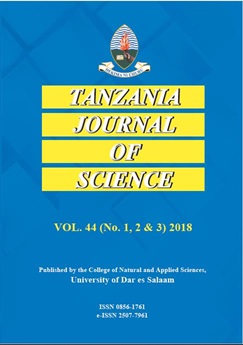Corn Stover as Substrate for Biogas Generation and Precursor for Biosilica Production via Anaerobic Digestion
Abstract
Production of fuels and chemicals from renewable biomass is crucial to sustainability of bio-based economy. In this study, anaerobic digestion of corn stover (CS) was carried out to produce biogas under mesophilic conditions. The study also investigated the potential of corn stover digestate ash as a potential source for biosilica production. A cumulative volume of 930 mL of biogas was produced with methane content of 85.87%. Higher and lower calorific values of biogas were calculated to be 36.30 MJ/m3 and 32.70 MJ/m3, respectively. Calcination of raw CS (RCS) and the digestate (CSD) was carried out at 600 °C for 3 hours. The samples generated, raw corn stover ash (RCSA) and corn stover digestate ash (CSDA) were characterized using X €ray fluorescence (XRF), Fourier transform infrared (FTIR) spectroscopy, scanning electron microscope (SEM), and X €ray diffractometer (XRD). The XRF results revealed that CSDA biosilica content was 60.49%, which was 34.84% higher than RCSA. There was reduction in most of the metallic impurities in CSDA compared to RCSA. Potassium oxide was drastically reduced from 12.34% to 1.60%, while Al2O3 was reduced from 7.17% to 6.95%. SEM images showed the changes in the surface morphology of RCSA and CSDA, while FTIR spectra identified the changes in the key functional groups present in the samples. The study showed that CS and its digestate could serve as profitable renewable feedstocks for bioenergy production and bio-based chemicals like silica.
Keywords: Anaerobic Digestion; Biogas; Biosilica; Corn Stover; Digestate; Calorific Value


